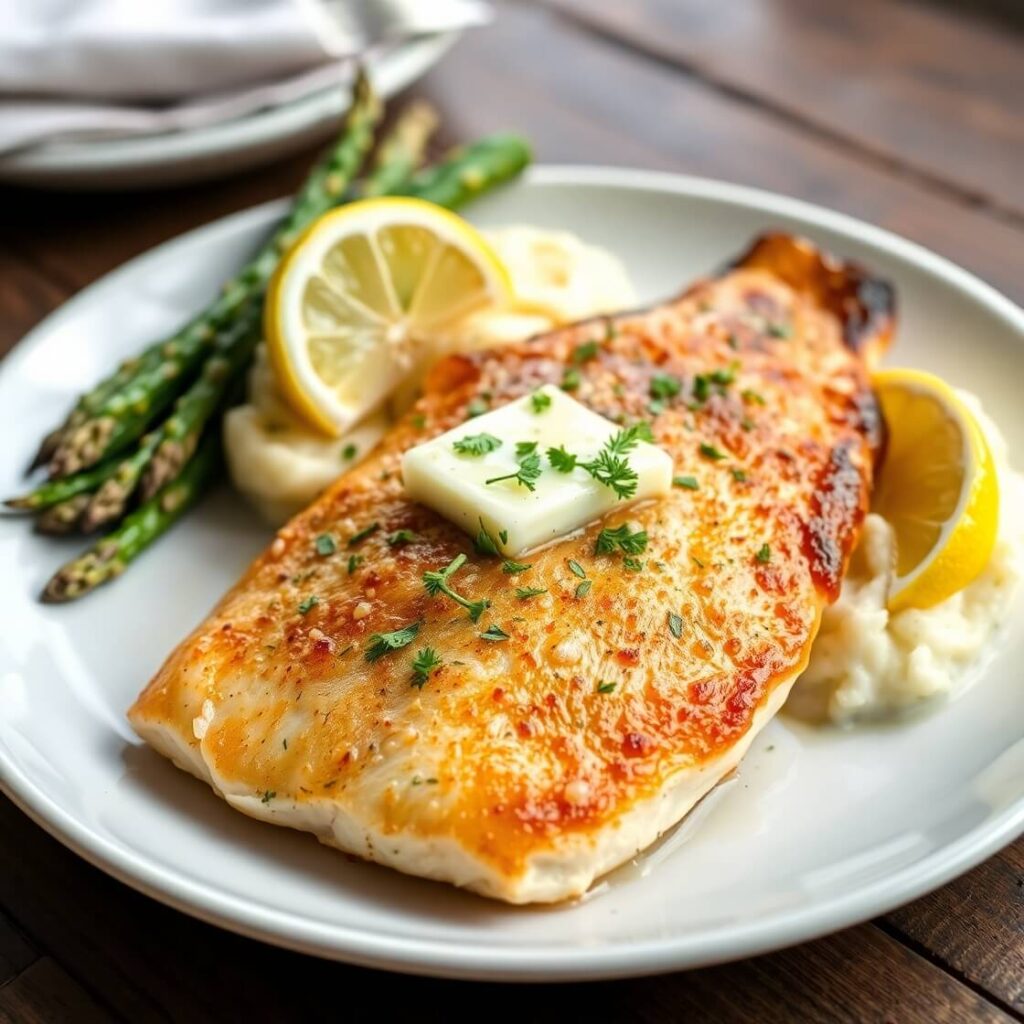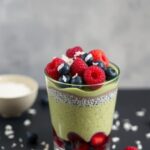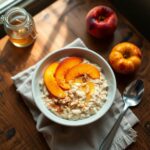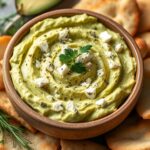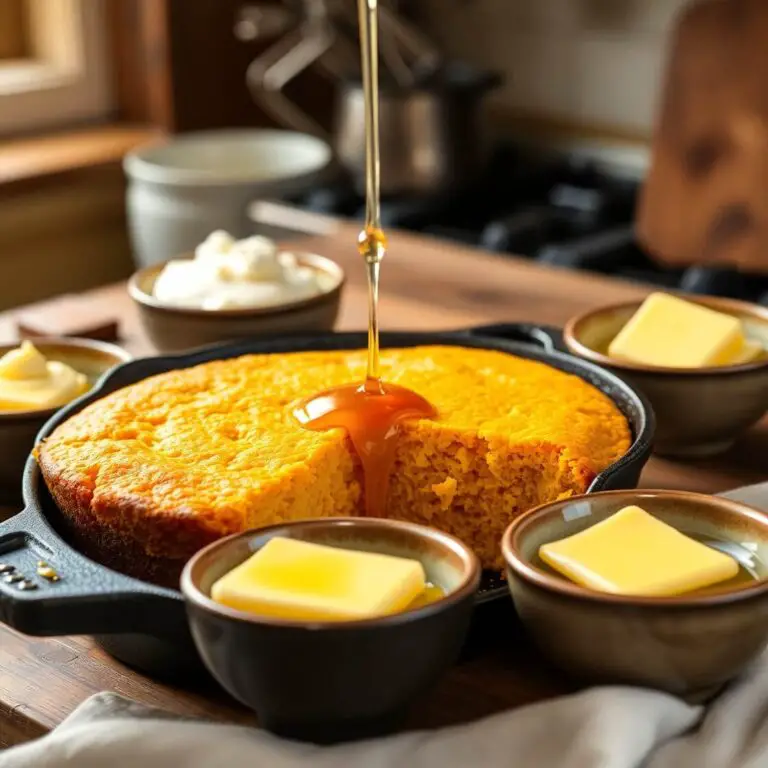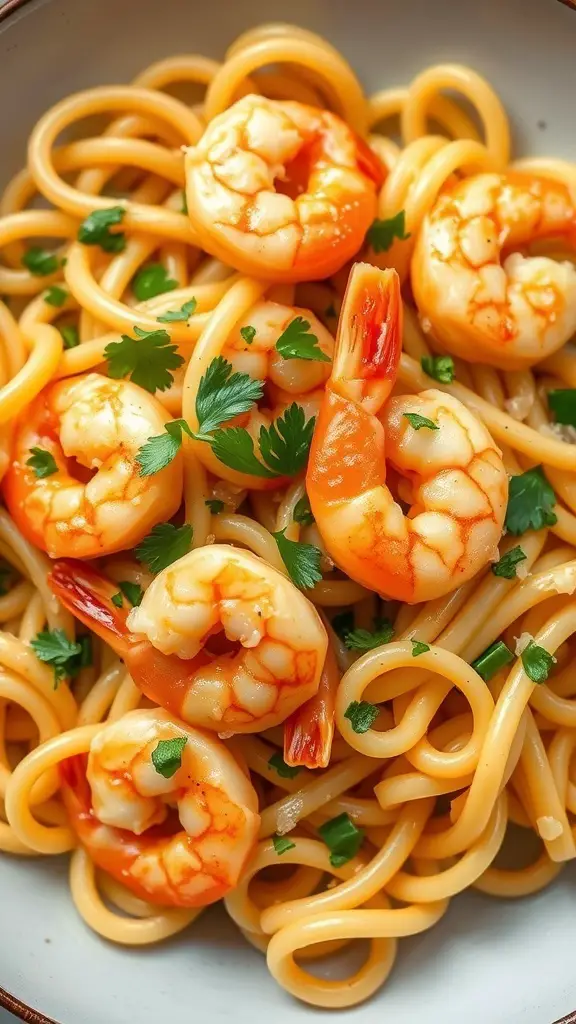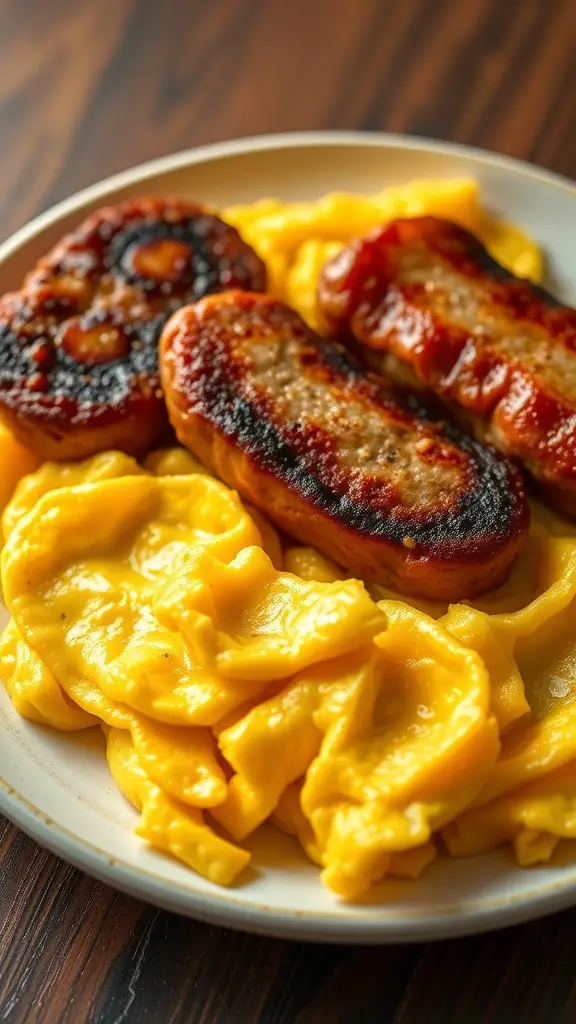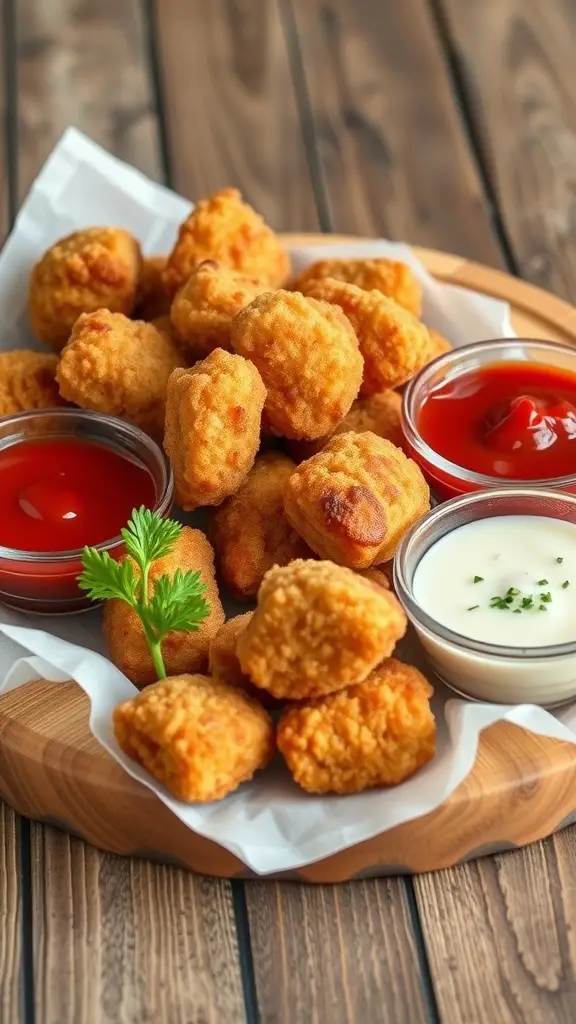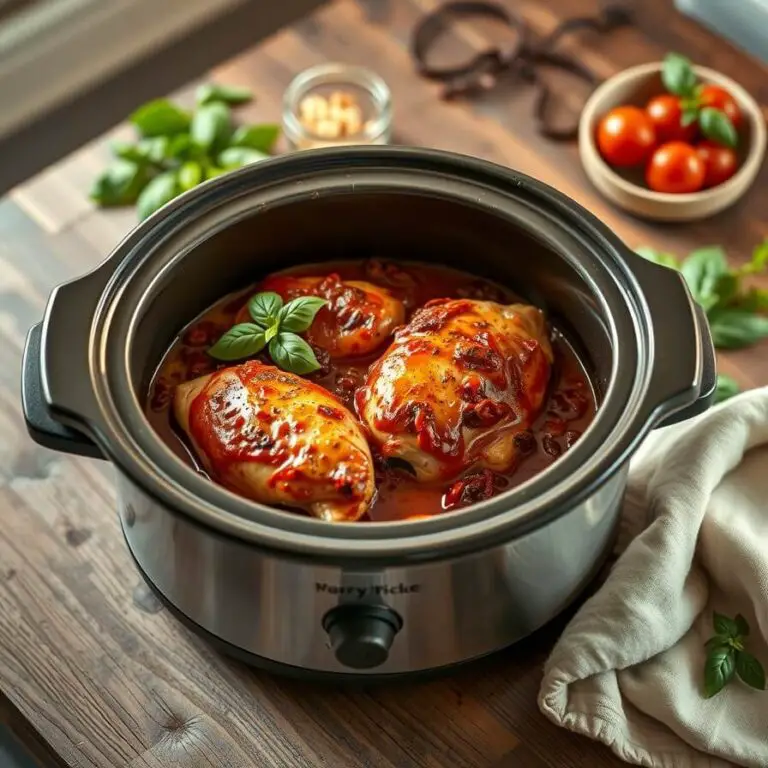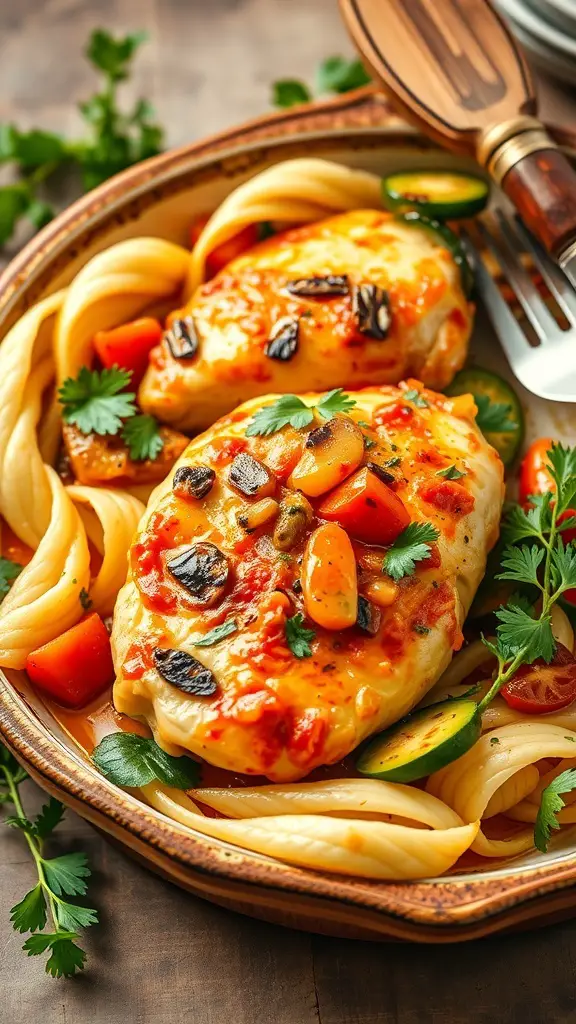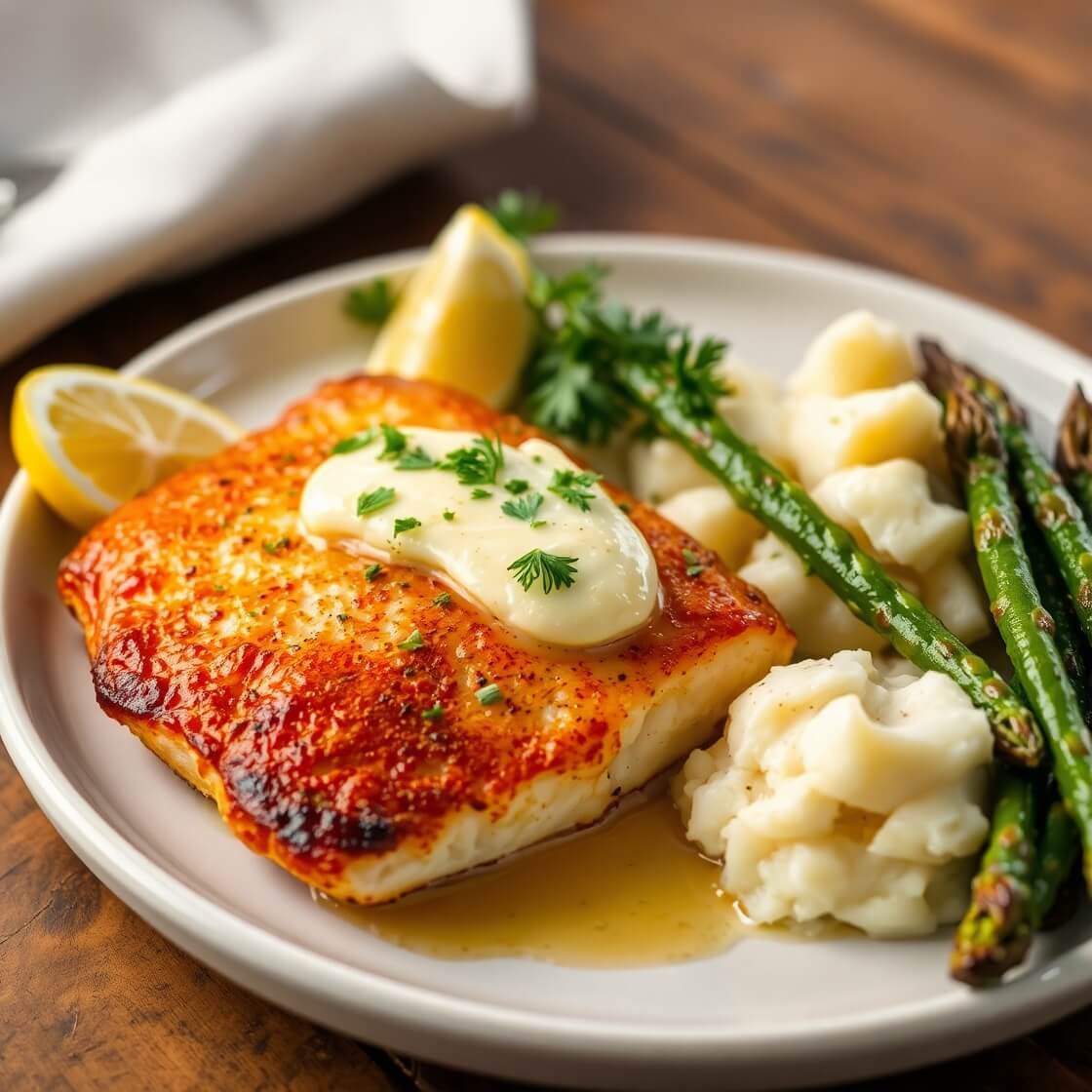
I still remember the first time I cooked walleye—it was after a lakeside summer trip in Minnesota, where we caught a few ourselves. It felt like a rite of passage, turning something wild and fresh into a meal that felt like comfort on a plate. Walleye is one of those underrated fish that deserves the spotlight. Its delicate, flaky texture and mildly sweet flavor make it a dream to cook—and even better to eat.
This pan-seared walleye with lemon herb butter is one of those recipes you’ll keep going back to. It’s quick, elegant, and packed with flavor. Whether you’re hosting a cozy dinner or just craving something wholesome and light, this dish fits right in. Keep reading—because if you love fish that’s simple yet impressive, you’re in for a treat.
Why I Love This Recipe
Walleye is a Midwestern treasure, and once you’ve tasted it, you understand why it’s a favorite in so many northern households. What makes this recipe special is how it celebrates the fish’s natural flavor rather than masking it.
I wanted to create something that feels a little fancy but doesn’t require a culinary degree. That’s how this recipe came to be—pan-seared walleye with a golden crust and finished with a lemon herb butter that melts into every flaky bite.
The real charm? It’s all about balance. The crispy skin gives you texture, while the buttery sauce adds richness and brightness. It’s the kind of meal that feels like a reward after a long day.
People often overthink fish, but this dish proves you don’t need an overly complicated approach. With fresh ingredients, a hot pan, and a few careful touches, you’ll have a restaurant-quality dinner that’s deeply satisfying.
Ingredients for Pan-Seared Walleye with Lemon Herb Butter
Before you even heat the skillet, you’ll want to make sure you have everything you need.
This recipe isn’t heavy on ingredients—it’s about quality, not quantity. What matters most is using fresh fish and real butter, paired with a few fragrant herbs that highlight the walleye’s naturally clean taste.
Here’s what you’ll need:
- Walleye fillets (skin-on if possible): These should be fresh, ideally about 5-7 oz each. Skin-on helps develop that golden crisp when seared.
- Salt and freshly ground black pepper: For seasoning both sides of the fillets.
- All-purpose flour: Just a light dusting helps the skin crisp up without overwhelming the fish.
- Unsalted butter: Used for both cooking and finishing the fish.
- Olive oil: Helps get that golden sear without burning the butter.
- Garlic: Minced and sautéed briefly for that aromatic base.
- Fresh lemon juice and zest: Adds brightness and helps cut through the richness of the butter.
- Fresh parsley and dill: These herbs work wonders with mild fish—don’t skip them.
Optional but lovely: a dash of white wine or a pinch of red pepper flakes if you want to layer in some extra character.
This list might look simple, but that’s the point. You want every flavor to shine through without competing.
How Much Time Will You Need
The beauty of this dish lies in how fast it comes together.
If you’ve already got your fish cleaned and trimmed, here’s the breakdown:
- Prep time: About 10 minutes
- Cooking time: 8–10 minutes
- Total time: Around 20 minutes from start to finish
It’s the perfect weeknight option, but it also works when you’re entertaining because you won’t be stuck in the kitchen all evening.
How to Make This Pan-Seared Walleye
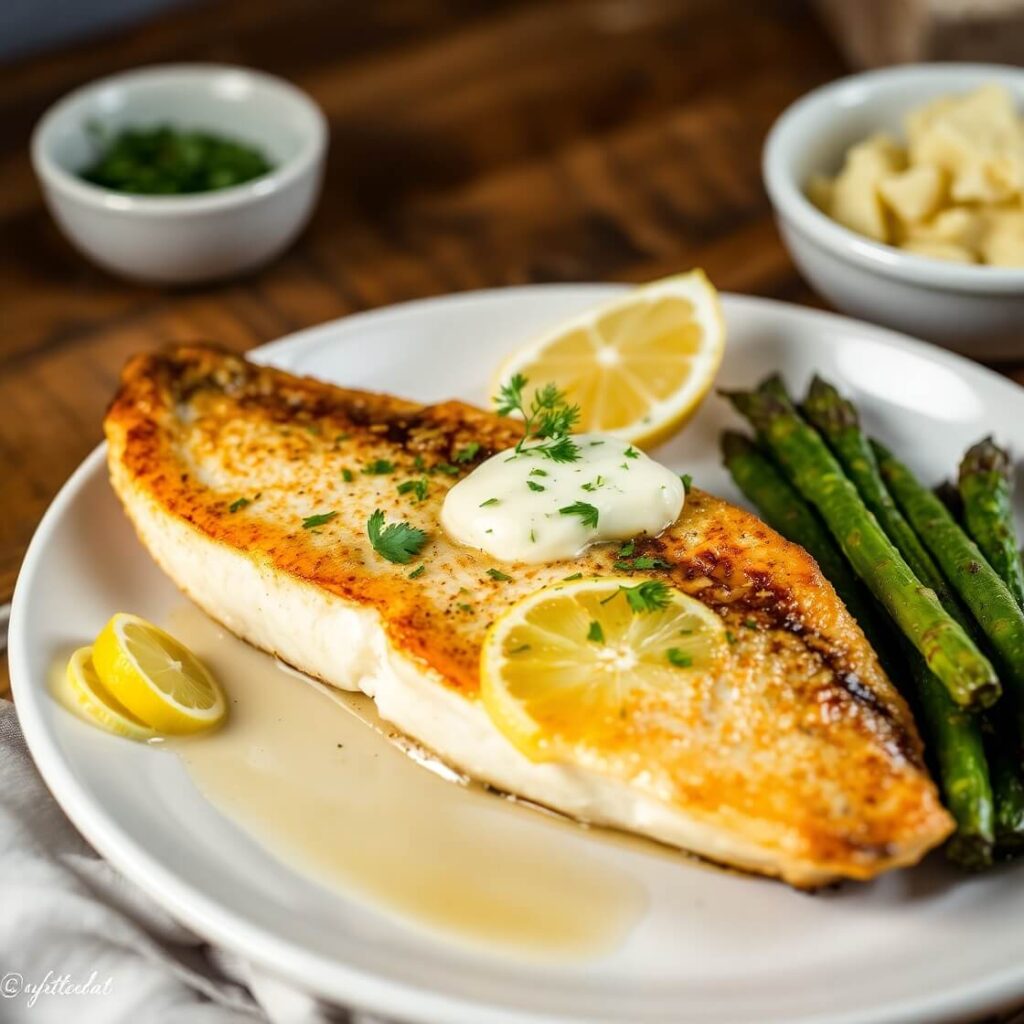
Cooking walleye isn’t difficult, but attention to detail will make it shine. Here’s exactly how I make it:
Step – 1: Prep the fillets
Start by patting your walleye fillets dry with paper towels. This is a crucial step to get that golden crust. Once dry, season both sides with salt and pepper.
Lightly dredge the fillets in all-purpose flour, then shake off the excess. You’re not going for a thick coating—just enough to help with browning.
Step – 2: Heat your skillet
Set a heavy-bottomed skillet (preferably stainless steel or cast iron) over medium-high heat. Add a tablespoon of olive oil and a tablespoon of butter.
You want the butter to foam but not brown. Swirl it around the pan to coat the bottom evenly.
Step – 3: Sear the fish
Carefully place the walleye fillets skin-side down in the hot skillet. Press down gently with a spatula for a few seconds to keep the fish from curling up.
Cook undisturbed for about 4–5 minutes, depending on the thickness of your fillets. You’ll see the color change halfway up the sides—this is your sign to flip.
Turn the fillets and cook for another 2–3 minutes, until the fish is opaque and flakes easily with a fork. Remove and set aside.
Step – 4: Make the lemon herb butter
In the same skillet (don’t clean it—you want those flavorful bits), add another tablespoon of butter.
Once melted, toss in the garlic and cook for 30 seconds. Add the lemon zest, lemon juice, and chopped herbs. Stir to combine.
Optional: Deglaze with a splash of white wine and let it reduce for 30 seconds.
Step – 5: Finish and serve
Spoon the hot lemon herb butter over the fish. Serve immediately while the skin is still crisp and the butter is still warm and fragrant.
Substitutions
If you can’t find walleye, don’t worry—this recipe is flexible and still delivers great results.
- Other fish options: Try perch, cod, or even halibut. Just make sure you adjust the cook time based on thickness.
- Herbs: No dill? No problem. Tarragon or chives also work beautifully.
- Flour alternatives: If you’re gluten-free, you can use almond flour or even cornstarch for that light coating.
- Butter: Ghee is a great alternative if you want something with a higher smoke point and rich flavor.
These tweaks won’t compromise flavor—they might even help you discover a version you love even more.
Best Side Dishes for Pan-Seared Walleye
Walleye is versatile, so it pairs well with a wide range of sides. Here are three I always recommend:
1. Garlic Mashed Potatoes
Creamy and buttery with just the right amount of garlic, these are a perfect match for the lemon butter sauce.
2. Roasted Asparagus with Parmesan
Crisp and slightly nutty, asparagus balances the richness of the fish without competing for attention.
3. Wild Rice Pilaf
This nutty, earthy grain adds depth to the meal, and it’s a traditional Midwestern pairing for walleye.
These sides make the dish feel like a full occasion—elevated yet comforting.
Serving and Presentation Tips
Presentation can take a simple dish like pan-seared walleye and make it feel like a five-star experience. I like to plate this with just enough flair to make it special without complicating things.
A classic white plate makes the golden crust and green herbs pop. Lay the walleye fillet across the plate with the skin side up (that crispiness deserves the spotlight). Spoon the lemon herb butter generously over the top, letting it pool slightly around the edges.
Garnish with a fresh lemon wedge, a small sprig of parsley, and maybe even a few microgreens if you’re feeling fancy. If you’re serving with mashed potatoes or wild rice, keep the plating simple—fish on one half, starch or veg on the other, so the butter sauce doesn’t drown everything.
A sprinkle of flaky sea salt just before serving makes everything taste sharper and more vibrant.
Tips and Tricks to Make This Recipe Better
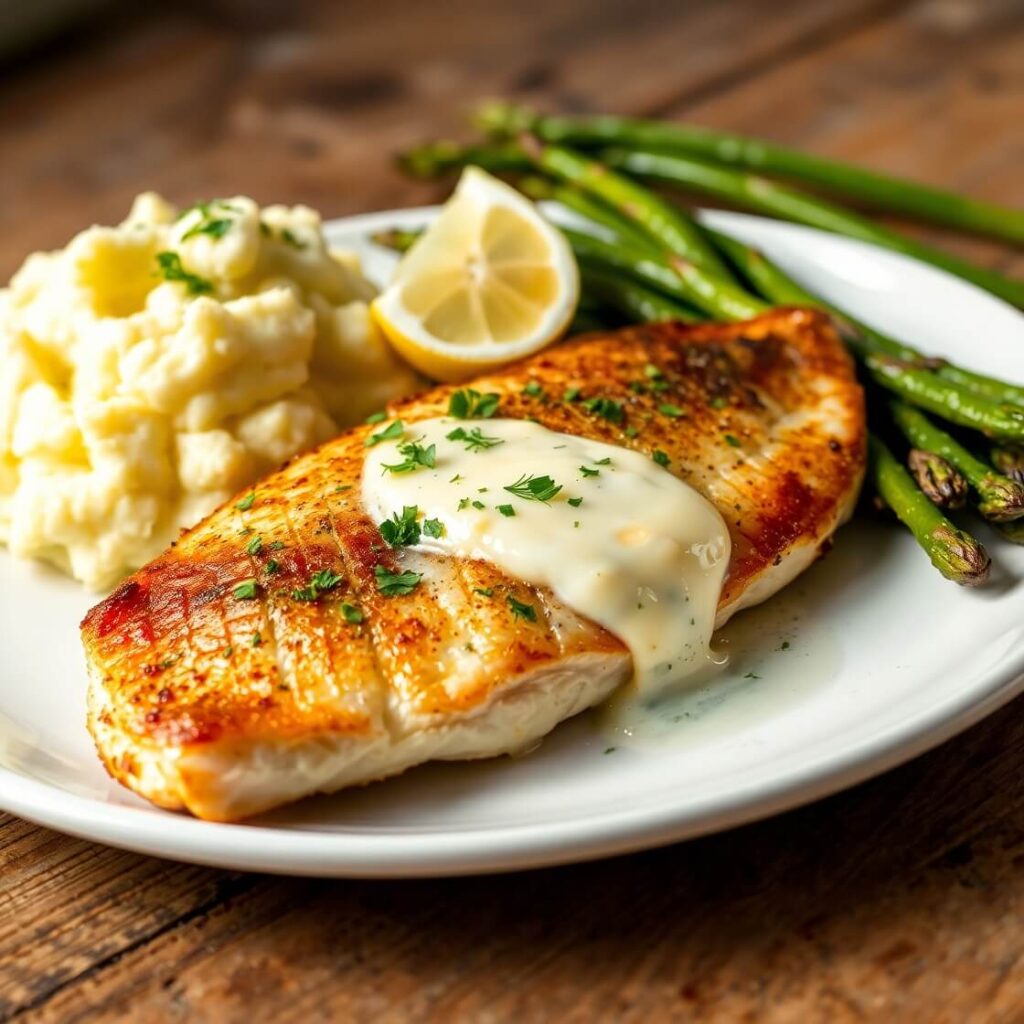
This recipe is all about finesse, and small touches make a big difference. Here are some of my best tips:
- Use a fish spatula: A flexible, thin fish spatula helps lift the fillet without tearing the skin.
- Hot pan, cold oil: Let the skillet get hot before adding oil and butter. This helps prevent sticking and gives you a beautiful sear.
- Don’t move the fish too soon: Once the fish is in the pan, resist the urge to move it. It needs time to form a crust and release naturally.
- Fresh herbs only: Dried herbs won’t give the same burst of flavor or color—fresh is key for that lemon herb butter.
- Finish with acid: Lemon juice right at the end brightens everything and cuts through the richness.
Common Mistakes to Avoid
Even though this dish is simple, there are a few pitfalls to watch out for:
- Using wet fish: Moisture is the enemy of a good sear. Always pat your fish dry with paper towels.
- Overcooking: Walleye cooks quickly. If you go even a minute too long, it can dry out. Watch for that opaque look and flakiness.
- Too much flour: A light dusting is enough. A heavy coating will turn gummy instead of crisp.
- Burning the butter: Butter browns fast, especially in a hot skillet. Combine it with olive oil to give yourself a buffer and better control.
- Skipping the rest time: Let the fish rest for 1–2 minutes off heat before serving so juices redistribute without turning the fillet soggy.
How to Store It
If you have leftovers, you’re in luck—walleye holds up surprisingly well if stored properly.
Refrigerator:
Store cooled walleye in an airtight container in the fridge for up to 2 days.
Reheating tip: Use a skillet over medium heat with a touch of butter or oil to reheat the fish. Microwave can dry it out quickly, so try to avoid it unless you’re short on time.
Freezer:
You can freeze cooked walleye, but I suggest doing so without the lemon butter sauce. Wrap tightly in foil and then place in a freezer-safe container. It’ll keep for about 2 months. Thaw overnight in the fridge before reheating.
FAQ
What is walleye fish best known for?
Walleye is prized for its mild flavor and flaky texture. It’s a freshwater fish commonly found in the northern US and Canada, especially popular in Midwest cooking.
Can I make this recipe without the skin on?
Yes, but the skin helps the fish hold together and gives you a lovely texture contrast. If your fillets are skinless, handle them gently and reduce the sear time slightly.
What can I use instead of lemon?
If you’re out of lemon, try using white wine vinegar or a splash of lime juice. Just don’t skip the acid altogether—it brightens the dish beautifully.
How do I know when walleye is fully cooked?
The fish should be opaque and flake easily with a fork. If you’re using a thermometer, aim for an internal temp of 145°F.
Can I bake this instead of pan-searing?
You can! Bake at 400°F for 12–15 minutes, depending on the thickness of your fillets. Finish with the herb butter just before serving.
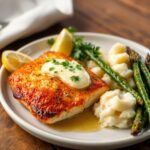
Pan-Seared Walleye with Lemon Herb Butter
- Total Time: 20 minutes
- Yield: 2 1x
- Diet: Low Calorie
Description
A beautifully simple fish dish that delivers on elegance and flavor. This pan-seared walleye is crisp on the outside, flaky on the inside, and finished with a bright lemon herb butter that transforms a humble fillet into something dinner-party worthy. Ready in under 30 minutes, it’s perfect for both busy weeknights and special occasions.
Ingredients
- 2 walleye fillets (about 5–7 oz each, skin-on preferred)
- Salt and freshly ground black pepper, to taste
- 2 tablespoons all-purpose flour (for dredging)
- 2 tablespoons olive oil
- 2 tablespoons unsalted butter, divided
- 1 clove garlic, minced
- 1 tablespoon lemon juice
- Zest of 1 lemon
- 1 tablespoon chopped fresh parsley
- 1 tablespoon chopped fresh dill
Instructions
- Pat fillets dry and season both sides with salt and pepper.
- Lightly dredge the fillets in flour; shake off excess.
- Heat oil and 1 tablespoon butter in a skillet over medium-high heat.
- Sear fillets skin-side down, pressing gently with spatula. Cook for 4–5 minutes.
- Flip and cook the other side for 2–3 minutes until fully cooked. Remove from pan.
- In the same skillet, melt remaining butter. Add garlic and sauté briefly.
- Stir in lemon juice, zest, and fresh herbs.
- Spoon sauce over fish and serve immediately.
Notes
- Use fresh herbs for best flavor.
- Don’t skip patting the fish dry—it’s crucial for getting a good sear.
- Serve with garlic mashed potatoes, wild rice, or roasted vegetables.
- Prep Time: 10 minutes
- Cook Time: 10 minutes
- Category: Main Dish
- Method: Pan-Seared
- Cuisine: American
Nutrition
- Serving Size: 2
- Calories: 310
- Sugar: 0.5g
- Sodium: 220mg
- Fat: 20g
- Saturated Fat: 7g
- Unsaturated Fat: 11g
- Trans Fat: 0g
- Carbohydrates: 5g
- Fiber: 0.3g
- Protein: 28g
- Cholesterol: 85mg

